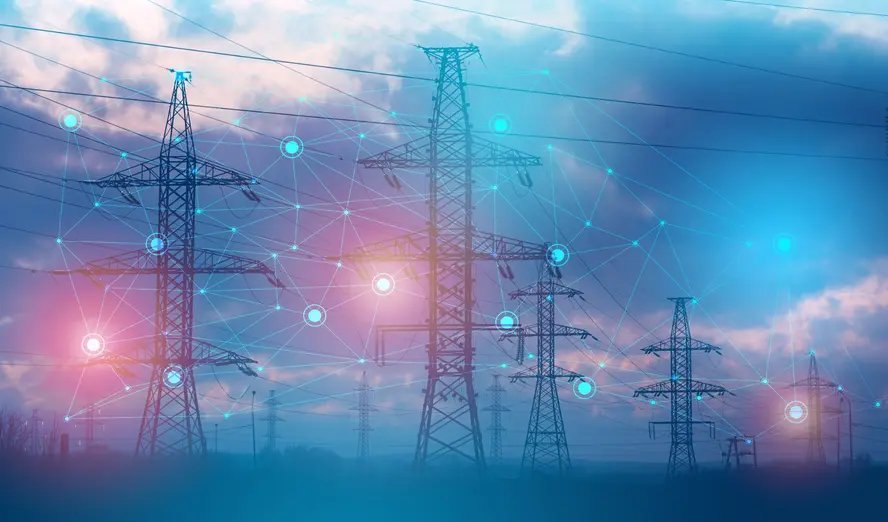Table of Contents
The U.S. electric grid, though aged, continues to be a vital backbone of modern society, powering homes, businesses, and industries across the country. As we look to the future, however, there’s increasing pressure to modernize this essential infrastructure, especially as energy demands evolve. The rise of new technologies and energy sources promises to bring transformative changes, enhancing the grid’s efficiency, resilience, and overall sustainability. However, this transition must be approached with caution and careful planning to ensure that the grid can continue to support America’s growing needs without introducing new vulnerabilities.

Modernizing the Grid for the Future
The U.S. electric grid, much of which was built in the 1960s and 1970s, is beginning to show its age. As global competition intensifies, particularly with countries like China, there’s a growing recognition that updating and upgrading the grid is not just a matter of efficiency—it’s a matter of national security. The energy demand is only increasing, driven by factors such as population growth, urbanization, and the rise of energy-intensive technologies. To remain competitive, the U.S. must modernize its energy infrastructure to meet future demands without compromising the reliability of its power supply.

Enhancing Grid Efficiency and Reliability
To improve grid reliability, many utilities are already implementing advanced technologies to streamline operations and reduce inefficiencies. Smart grid technologies are becoming more common, enabling real-time monitoring and optimization of energy distribution. These systems can detect faults faster, predict power demand with greater accuracy, and help prevent blackouts before they occur. These innovations allow for a much more responsive grid, one that can adjust to fluctuations in supply and demand much more efficiently than ever before.
One of the key areas of focus for grid operators is energy storage. The ability to store energy for later use is crucial in managing renewable energy sources, which can be intermittent. For example, solar and wind power generation can fluctuate based on weather conditions. Advanced energy storage systems can help smooth out these fluctuations, ensuring a constant supply of electricity regardless of external conditions.
The Role of Energy Efficiency Technologies
A growing trend in energy efficiency is the development of systems that automatically adjust energy use based on real-time data. These systems, known as demand-side management technologies, optimize energy consumption in commercial and residential buildings by adjusting heating, cooling, and lighting systems to reduce energy usage during peak hours. This not only saves money for consumers but also reduces strain on the grid, helping to balance energy demand during high-use periods.
One promising technology that’s already being implemented in commercial and industrial buildings is load reduction systems, which manage energy consumption by regulating heating and cooling systems. These systems can significantly reduce energy use, particularly during peak hours when the grid is under the most strain. During a particularly cold week in Europe, for example, a RAND study showed that such systems more than doubled energy reserves and reduced average costs by about 10%. This level of efficiency can be a game-changer in terms of making the grid more sustainable and affordable for consumers.

Navigating the Risks and Challenges
Despite the potential benefits, there are risks associated with the modernization of the electric grid. As with any new technology, the introduction of advanced systems creates vulnerabilities. The possibility of cyberattacks on the grid is a major concern, as these systems could become prime targets for malicious actors seeking to disrupt power distribution.
Moreover, there’s the risk of over-reliance on automated systems that might make decisions without human intervention. In the event of an emergency, such as a natural disaster, these systems might make decisions that aren’t well-represented in their training data, leading to unintended consequences. As seen in previous failures, when automation takes precedence over human oversight, things can go wrong quickly.
Ensuring Safe Implementation and Regulation
To mitigate these risks, energy regulators must develop a clear framework for the adoption and deployment of new technologies. This could include the creation of “sandboxes” where companies can test and refine their systems before they go live on the grid. This would ensure that the new technologies are not only effective but also safe and reliable.
Additionally, transparency is crucial. Power companies must report any use of new technologies, ensuring that they are open about the risks and rewards of deploying such systems. The public must have confidence in these advancements, understanding the potential for both improvement and risk. As the grid continues to evolve, policymakers and industry leaders must work together to address concerns and ensure the smooth integration of new technologies.

The Road Ahead for U.S. Energy
Looking to the future, the modernization of the U.S. electric grid holds tremendous promise. With the integration of renewable energy sources, improved energy storage systems, and smarter grid technologies, the U.S. can create a more resilient, efficient, and affordable energy system. However, this transition must be managed carefully. As we embrace new technologies, we must ensure that they are implemented in a way that minimizes risks and maximizes benefits for both consumers and the broader economy.
In conclusion, the U.S. electric grid is at a critical juncture. By embracing innovation and modernization, it can continue to power the nation efficiently for decades to come. However, this transformation requires careful planning, smart regulation, and ongoing oversight to ensure that the grid of the future is safe, reliable, and capable of meeting the demands of a rapidly changing world.
Author Profile
- Syed Tahir Abbas is a Master's student at Southwest University, Chongqing, specializing in international relations and sustainable development. His research focuses on U.S.-China diplomacy, global geopolitics, and the role of education in shaping international policies. Syed has contributed to academic discussions on political dynamics, economic growth, and sustainable energy, aiming to offer fresh insights into global affairs.
Latest entries
 Japanese PoliticsSeptember 6, 2025Prince Hisahito’s Coming-of-Age and Japan’s Male-Only Succession Dilemma
Japanese PoliticsSeptember 6, 2025Prince Hisahito’s Coming-of-Age and Japan’s Male-Only Succession Dilemma GeopoliticsAugust 23, 2025Previewing the White House Visit of South Korean President Lee Jae Myung
GeopoliticsAugust 23, 2025Previewing the White House Visit of South Korean President Lee Jae Myung Middle East ConflictJuly 22, 2025Israel’s Deadly Attacks on Gaza: A Dire Humanitarian Crisis and International Calls for a Truce
Middle East ConflictJuly 22, 2025Israel’s Deadly Attacks on Gaza: A Dire Humanitarian Crisis and International Calls for a Truce Middle East & North AfricaJuly 20, 2025Israel Targets Damascus Amid Rising Tensions in Syria
Middle East & North AfricaJuly 20, 2025Israel Targets Damascus Amid Rising Tensions in Syria

